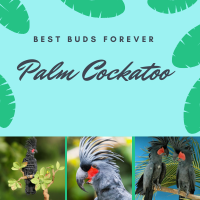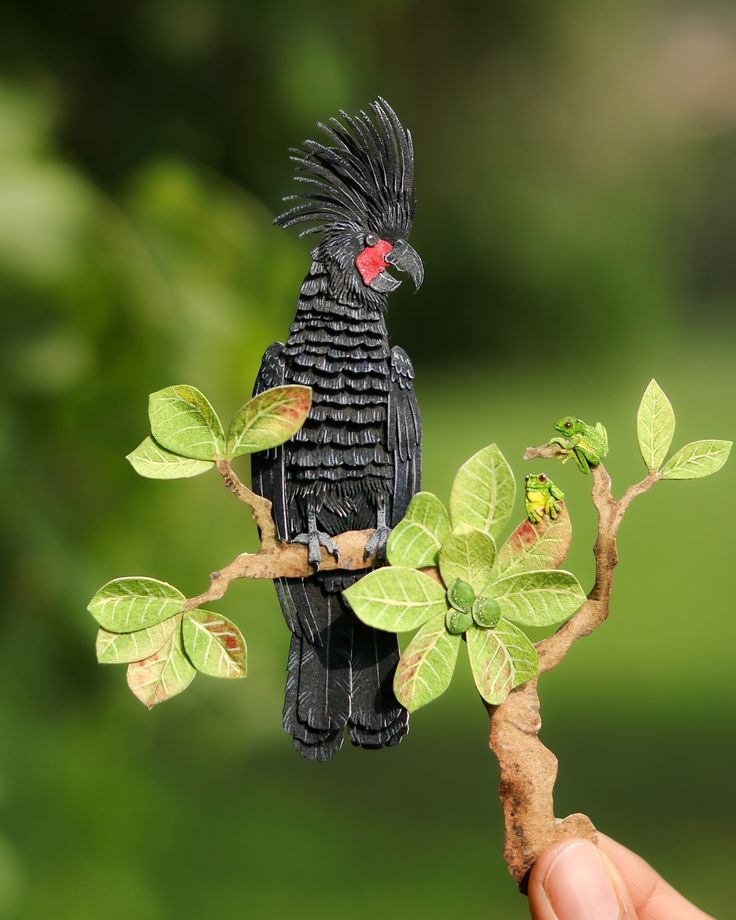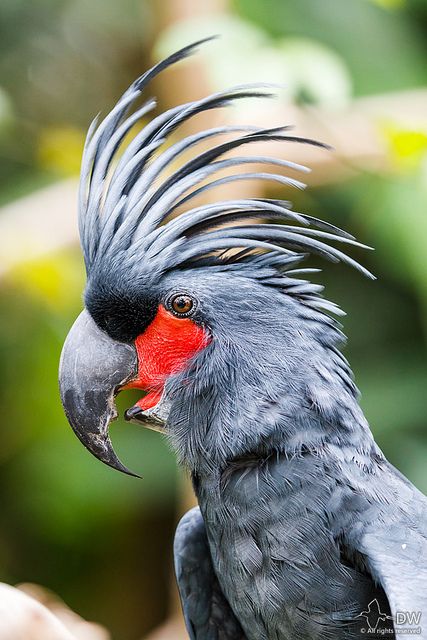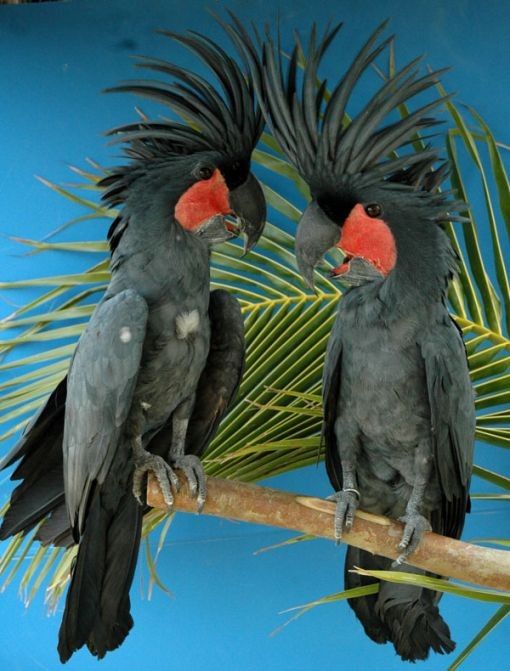Introduction
The Palm Cockatoo Northern Australia (Probosciger aterrimus) is a striking bird native to northern Australia and parts of New Guinea. Known for its impressive size and distinct features, including a prominent crest and powerful black beak, this species thrives in the rainforests and woodlands of the Cape York Peninsula. Social and intelligent, Palm Cockatoos often display unique behaviors, such as drumming on tree trunks to attract mates. However, they face threats from habitat loss and the illegal pet trade, highlighting the need for conservation efforts to protect these remarkable birds and their natural habitats.
Types of Palm Cockatoo Northern Australia
- Explore the types of Palm Cockatoo and discuss related species often compared to it, such as the Sulphur-crested Cockatoo, Umbrella Cockatoo, Blue-eyed Cockatoo, Carnaby’s Black Cockatoo, Glossy Black Cockatoo, Tanimbar Corella, Long-billed Corella, Major Mitchell’s Cockatoo, Western Corella, and White Umbrella Cockatoo.
Sulphur-crested Cockatoo:
Known for its bright yellow crest, this large, social cockatoo is native to Australia and New Guinea, often seen in flocks.
Umbrella Cockatoo: Recognizable by its white plumage and large, fan-like crest, it originates from Indonesia and is known for its affectionate nature.
Blue-eyed Cockatoo: This rare cockatoo has striking blue eye rings and white feathers, found primarily in New Guinea’s lowland forests.
Carnaby’s Black Cockatoo: Endemic to southwestern Australia, this black cockatoo has a white tail band and faces threats due to habitat loss.
Glossy Black Cockatoo: Sporting glossy black feathers and red tail panels, this shy cockatoo feeds primarily on she-oak seeds in eastern Australia.
Tanimbar Corella: Small and primarily white with pink around the eyes, this cockatoo hails from the Tanimbar Islands in Indonesia.
Long-billed Corella: Native to southeastern Australia, this cockatoo has a long, curved bill and red markings around the throat, used for digging up roots.
Major Mitchell’s Cockatoo: Known for its pink and white feathers and vibrant pink crest, it’s one of Australia’s most striking cockatoos, but also rare.
Western Corella: This white cockatoo with subtle pink markings is native to southwestern Australia, often found in open woodland and farmland areas.
White Umbrella Cockatoo: A variation of the Umbrella Cockatoo, this bird is beloved for its entirely white plumage and its expressive, fan-shaped crest.
Palm Cockatoo Northern Australia Food And Feeding
The Palm Cockatoo has a specialized diet primarily consisting of nuts, seeds, fruits, and berries. They are particularly fond of Kanari nuts and other hard-shelled nuts, which they crack open using their large, powerful beaks. This strong beak allows them to access foods that are too tough for many other birds to eat.
In the wild, Palm Cockatoos forage in trees, breaking off and discarding parts of unripe or unsuitable nuts and seeds. They also feed on various native fruits and occasionally flowers and leaf buds. Their diet is highly selective, and they are known to inspect and discard food items that don’t meet their standards.
In captivity, a balanced diet for Palm Cockatoos includes a variety of nutritious seeds, nuts, fresh fruits, and vegetables, along with specially formulated parrot pellets to ensure they receive all essential nutrients.
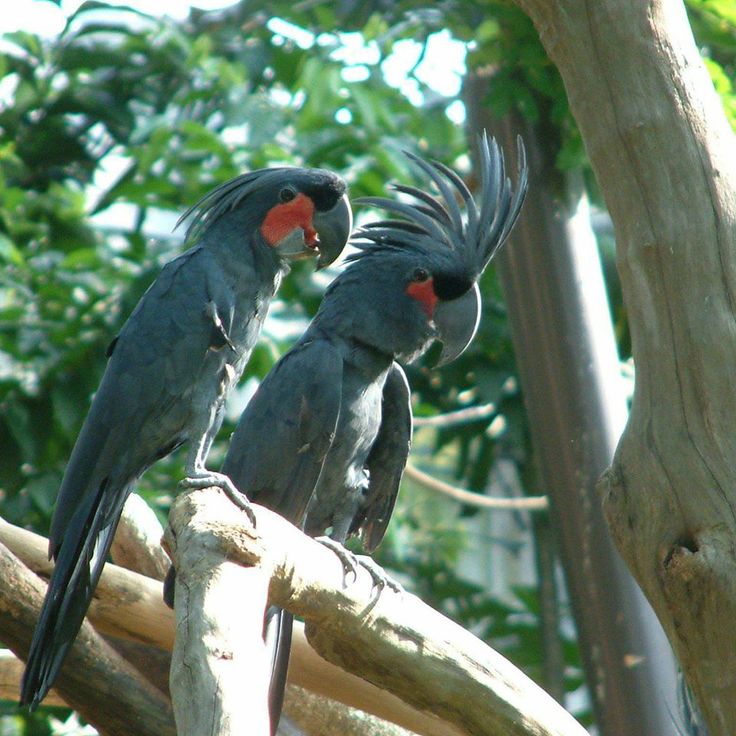
Physical Characteristics of the Palm Cockatoo
- Palm Cockatoo Size: The Palm Cockatoo is one of the largest cockatoo species, with an impressive size. Adults typically measure between 20 to 24 inches (50 to 60 cm) in length from head to tail, with a wingspan of around 27 to 31 inches (70 to 80 cm). These birds can weigh between 2 to 2.5 pounds (900 to 1,200 grams), making them a substantial presence among parrots. Their large, powerful beak and distinct crest add to their commanding appearance, making the Palm Cockatoo one of the most striking and sizable members of the cockatoo family.
- Beak and Tongue: Explain the functional and distinct structure of the black palm cockatoo beak and the black palm cockatoo tongue.
- Erectile Crest: Talk about the impressive parrot with an erectile crest and how this feature is used for communication and courtship.
- Male vs. Female Palm Cockatoo: Describe any notable differences between male palm cockatoos and females.
- Palm Cockatoo Mouth: Discuss the bird’s unique mouth structure and its importance in drumming and feeding.
Lifespan and Habitat
- Palm Cockatoo Lifespan: Describe their life expectancy in the wild and in captivity.
- Natural Habitat: Cover the Palm Cockatoo habitat in Northern Queensland, Australia, Cape York Peninsula, and the Aru Islands. Mention their preference for hollow trees as nesting sites.
Behavioral Characteristics
- Drumming Ritual: Explain the palm cockatoo drumming behavior, where males drum on hollow trees to mark territory and attract mates.
- Communication and Sounds: Describe palm cockatoo sounds and attempts to teach the palm cockatoo talking. Although they’re less vocal, they can mimic sounds and show an impressive range of calls.
- Breeding and Nesting: Highlight that the species is known to lay only one egg per season, which is unique among cockatoos.
Diet of the Palm Cockatoo Northern Australia
- Outline a Palm Cockatoo diet consisting of nuts, seeds, fruits, and vegetation from its natural habitat.
- Talk about the challenges of maintaining a balanced diet for these birds in captivity, particularly in the pet trade.
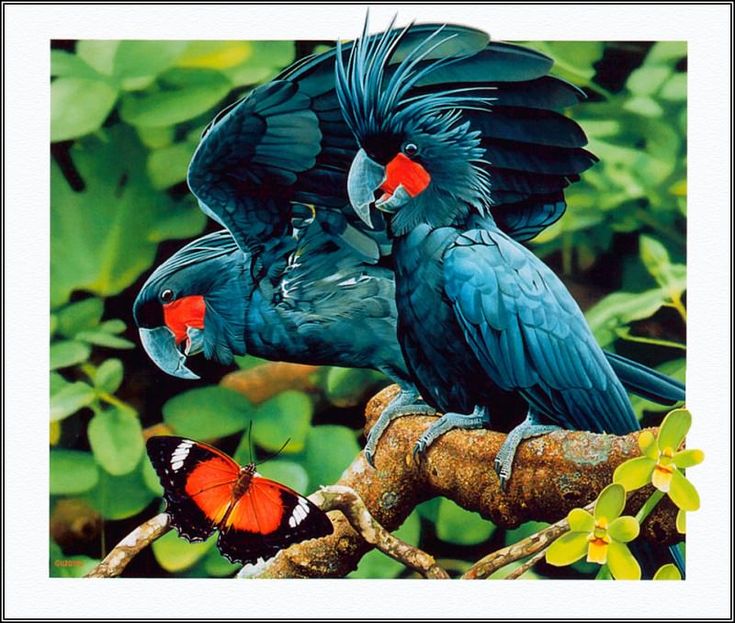
Palm Cockatoo Northern Australia and Conservation Status
- Explain why they are endangered, focusing on threats like habitat loss, climate change, and illegal palm cockatoo adoption.
- Discuss the pet trade’s impact, particularly the role of black palm cockatoo breeders, in maintaining the population while ensuring ethical practices.
Comparison with Other Cockatoos
- Compare the Palm Cockatoo to other types of cockatoos, such as African Cockatoos, and Australian species like Major Mitchell’s Cockatoo and Glossy Black Cockatoo. Mention specific physical and behavioral traits that make the Palm Cockatoo Northern Australia unique.
Fun Facts about the Palm Cockatoo Northern Australia
- Compile some fascinating palm cockatoo facts, like their unique appearance, lifespan, and behavioral traits that set them apart from other cockatoo species.
Largest Beak in the Cockatoo Family: The Palm Cockatoo has a powerful, oversized beak capable of cracking the toughest nuts and seeds.
Red Cheeks that Change Color: The bare red patches on their cheeks change brightness depending on their mood or excitement level.
Longevity: They can live up to 50–60 years in the wild, making them one of the longest-living parrots.
Single Egg Breeding: Unusually, Palm Cockatoos lay only one egg per breeding season, contributing to their vulnerable conservation status.
Endangered Species: Threatened by habitat loss and low reproduction rates, Palm Cockatoos are considered a vulnerable species.
Distinctive Black Plumage and Crest: Their glossy black feathers and striking erectile crest make them one of the most recognizable cockatoos.
Highly Intelligent: Known for their intelligence, Palm Cockatoos are social and require mental stimulation and social interaction.
Native Habitat: Found in Northern Australia’s Cape York Peninsula, New Guinea, and the Aru Islands, preferring forested and woodland areas.
Selective Eaters: Their diet includes nuts, seeds, and fruits, and they’re known to discard any food that doesn’t meet their standards.
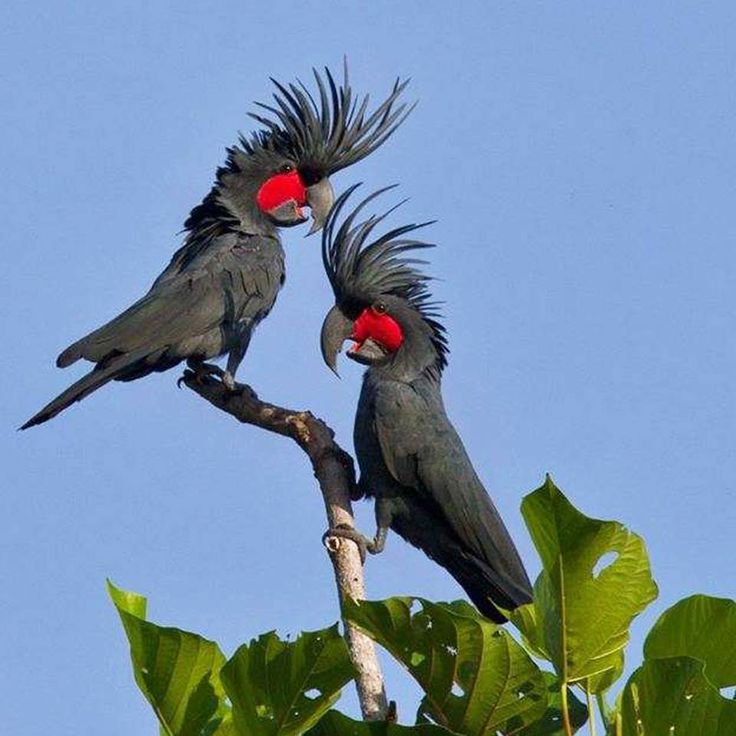
Key Reproductive Features
| Reproductive Feature | Description |
|---|
| Breeding Interval | Typically breeds once per year. |
| Breeding Season | August to December (varies by region). |
| Average Eggs per Season | Usually lays one egg per breeding season. |
| Range Time to Hatching | Approximately 30 days after laying the egg. |
| Range Fledging Age | 10 to 12 weeks after hatching. |
| Range Time to Independence | 3 to 6 months post-fledging, depending on the availability of food and environmental conditions. |
| Range Age at Sexual or Reproductive Maturity (Female) | Approximately 3 to 4 years. |
| Range Age at Sexual or Reproductive Maturity (Male) | Approximately 4 to 5 years. |
The Palm Cockatoo NorthernAustralian Popular Culture
- Discuss how the Palm Cockatoo has gained attention in places like Seattle as an exotic pet and its appeal in aviaries and zoos.
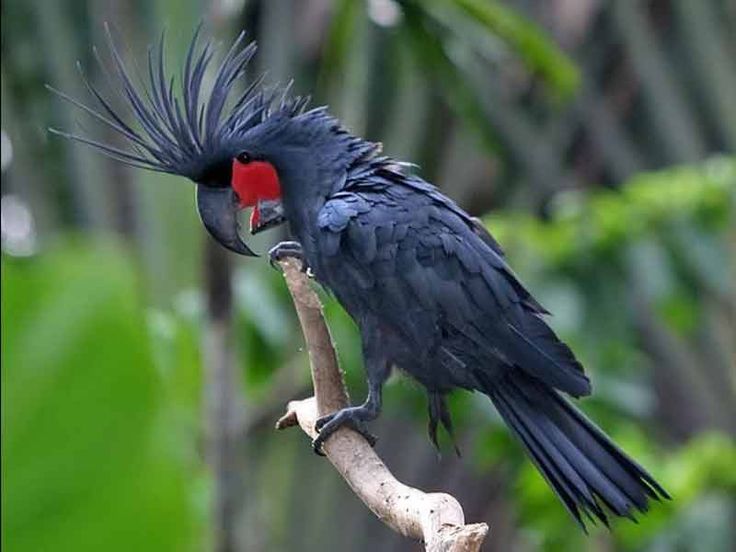
Conclusion
- Summarize the uniqueness of the Palm Cockatoo Northern Australia, its significance as a vulnerable species, and the importance of conservation efforts to protect this remarkable bird.


